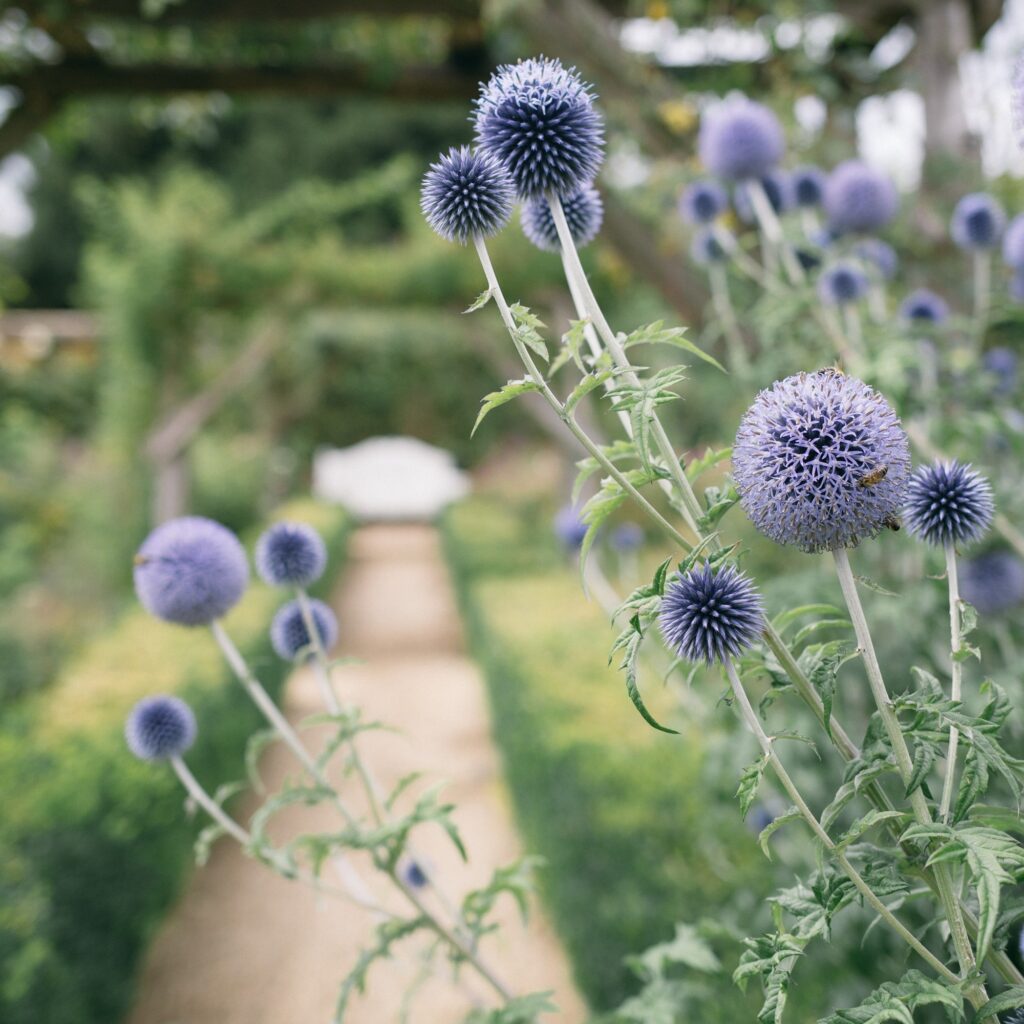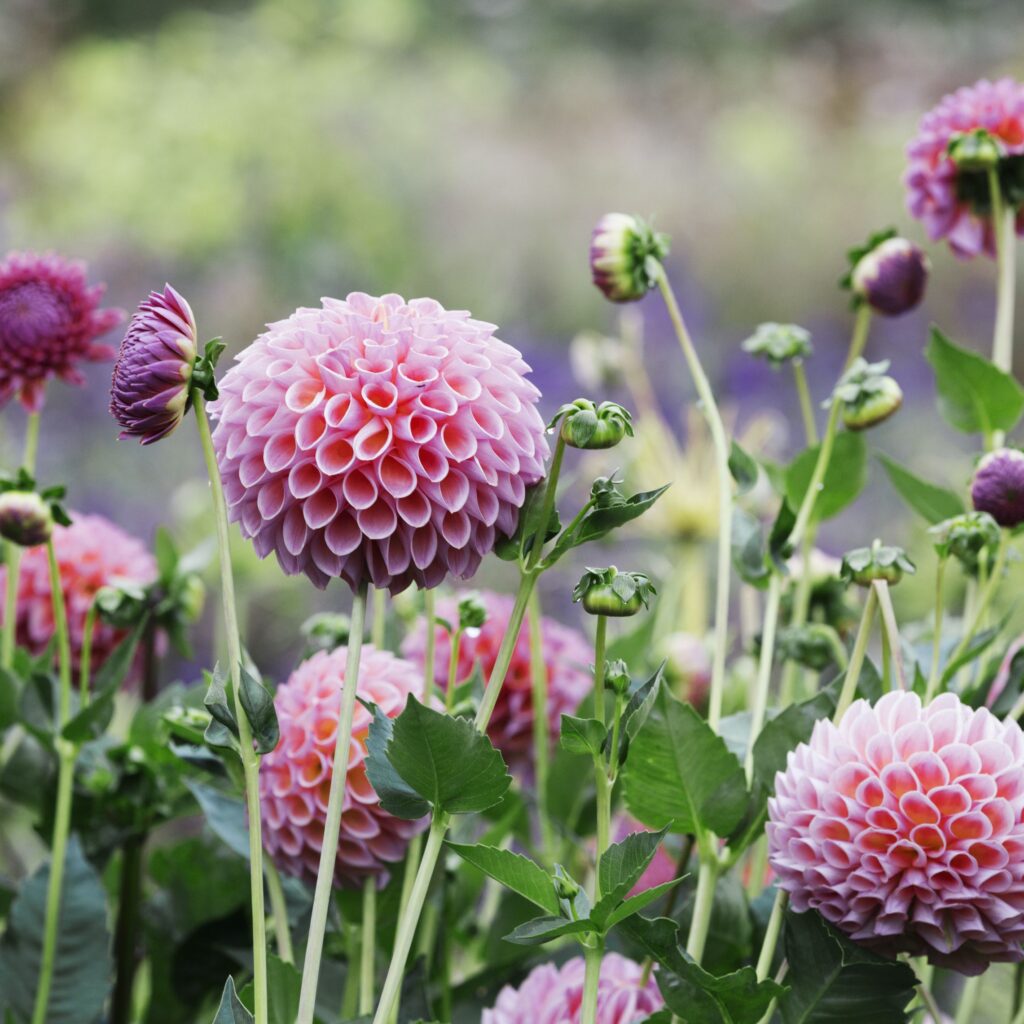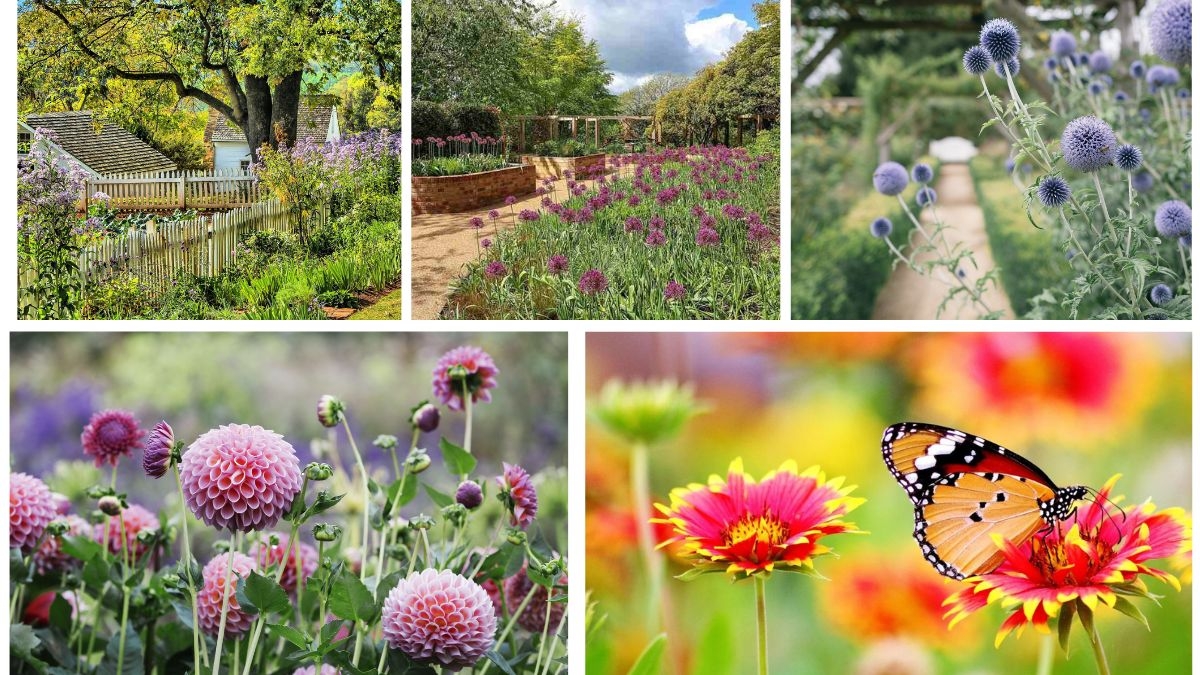Gardens have always been places of peace, beauty, and healing. However, sensory gardens take this experience one step further. Designed to stimulate the five senses—sight, smell, touch, taste, and hearing—these gardens provide therapeutic and calming experiences for people of all ages. Whether you’re building a small corner in your backyard, a wellness retreat, or even a container-based sensory setup on your balcony, the right plants can transform the atmosphere into one of complete relaxation.
In this guide, we’ll explore five incredible plants perfect for sensory gardens, each offering unique features to delight the senses and create an environment of harmony.
1. Lavender (Lavandula angustifolia) – The Plant of Calm and Fragrance

Few plants capture the spirit of relaxation as perfectly as lavender. This aromatic herb is a staple in sensory gardens because of its soothing fragrance and calming properties.
Why Lavender Works for Sensory Gardens:
- Smell: Lavender’s fragrance is known for reducing stress, improving sleep, and calming anxiety. Simply brushing past the plant releases its essential oils into the air.
- Sight: Its purple blooms add elegance and vibrant color to garden beds or borders.
- Touch: The soft, slender leaves provide a gentle texture that encourages tactile exploration.
Care Tips:
- Plant lavender in full sun with well-draining soil.
- Avoid overwatering; lavender thrives in slightly dry conditions.
- Prune regularly to encourage bushy growth and more blooms.
Relaxation Benefit:
Walking through a lavender-filled space is like stepping into a natural spa. Its aroma promotes mindfulness and relaxation, making it an essential plant for any sensory garden.
2. Rosemary (Rosmarinus officinalis) – A Multi-Sensory Herb

Rosemary isn’t just for seasoning dishes—it’s also a dynamic plant for sensory gardens. Its fragrance and texture are highly stimulating, making it a favorite for engaging multiple senses.
Why Rosemary Works for Sensory Gardens:
- Smell: Its strong pine-like aroma refreshes the senses and improves mental clarity.
- Taste: Fresh rosemary sprigs can be used in teas, breads, or roasted dishes.
- Touch: Its needle-like leaves add an interesting texture for tactile exploration.
- Sight: Its evergreen foliage keeps your garden looking vibrant year-round.
Care Tips:
- Prefers sunny spots with dry, sandy soil.
- Avoid waterlogged soil; rosemary is drought-tolerant.
- Trim often to prevent it from becoming woody.
Relaxation Benefit:
Rosemary stimulates the mind while calming the body. Studies suggest its aroma can improve memory and concentration, making it perfect for mindfulness practices in the garden.
3. Lamb’s Ear (Stachys byzantina) – A Plant to Touch and Feel

If you’re looking for a plant that invites touch, Lamb’s Ear is a must-have. With its velvety, silver-gray leaves, it provides a tactile experience unlike any other garden plant.
Why Lamb’s Ear Works for Sensory Gardens:
- Touch: Its leaves are soft and fuzzy, resembling the feel of a lamb’s ear—perfect for children or anyone exploring textures.
- Sight: The silvery foliage stands out beautifully against green plants, creating contrast.
- Sound: Its leaves create a gentle rustling sound in the breeze, adding to the sensory experience.
Care Tips:
- Plant in full sun to partial shade with well-draining soil.
- Once established, Lamb’s Ear requires minimal watering.
- Remove flower spikes to maintain lush foliage.
Relaxation Benefit:
Touching the soft leaves provides a grounding, stress-relieving effect. For children or individuals with sensory sensitivities, Lamb’s Ear offers comfort and engagement.
4. Jasmine (Jasminum spp.) – The Fragrance of Serenity

When it comes to intoxicating scents, jasmine is unmatched. Its white or yellow star-shaped flowers release a sweet, calming fragrance that fills the air, making it a highlight in sensory gardens.
Why Jasmine Works for Sensory Gardens:
- Smell: Its scent is famously linked with reducing anxiety, stress, and depression.
- Sight: Its delicate flowers add charm and beauty, especially when grown as a vine or shrub.
- Touch: The silky petals add a soft texture.
- Sound: Bees and pollinators buzzing around jasmine bring life and sound to the garden.
Care Tips:
- Grows best in warm, sunny locations with fertile, well-drained soil.
- Provide a trellis or support if growing climbing jasmine.
- Prune after flowering to encourage fresh growth.
Relaxation Benefit:
Jasmine’s fragrance promotes deep relaxation and is often used in aromatherapy for better sleep and mood improvement. Sitting near jasmine at dusk, when its scent is strongest, creates an enchanting and serene garden experience.
5. Mint (Mentha spp.) – Freshness for All the Senses
Mint is a versatile plant that stimulates taste, smell, and touch, making it a sensory powerhouse. With its cooling aroma and refreshing flavor, mint brings energy while also promoting calm.
Why Mint Works for Sensory Gardens:
- Smell: Crushing the leaves releases a fresh, cooling fragrance.
- Taste: Perfect for teas, salads, desserts, and refreshing drinks.
- Touch: Its slightly rough leaves provide an interesting texture.
- Sight: Mint’s bright green foliage adds a lively touch to garden spaces.
Care Tips:
- Mint spreads quickly, so grow it in containers to control growth.
- Prefers partial shade and moist, well-drained soil.
- Harvest regularly to encourage healthy growth.
Relaxation Benefit:
Mint’s aroma clears the mind and refreshes the spirit, while mint tea calms digestion and relaxes the body. It’s the perfect plant for sipping a warm cup of herbal tea in your sensory garden.
Designing a Sensory Garden with These Plants

When creating a sensory garden, the key is to combine plants that stimulate different senses in balance. Here are a few tips for incorporating the five plants above into a cohesive space:
- Layer the senses: Place lavender and jasmine near seating areas for fragrance, while rosemary and mint can grow near pathways for easy harvesting and touch.
- Add textures: Mix Lamb’s Ear with other leafy plants to create tactile zones.
- Create flow: Position plants so that walking through the garden naturally engages smell, touch, and sight.
- Think of all seasons: Choose evergreen herbs like rosemary to keep the sensory garden alive year-round.
Final Thoughts
A sensory garden is more than just a beautiful space—it’s a sanctuary for the mind and body. By adding lavender, rosemary, lamb’s ear, jasmine, and mint, you create an environment that delights the senses and promotes relaxation. These plants don’t just look good; they work to reduce stress, encourage mindfulness, and connect us with nature in meaningful ways.
Whether you’re designing a therapeutic space for yourself, your family, or your community, these five plants are perfect choices to transform your garden into a calm, engaging, and restorative haven.






Leave A Comment